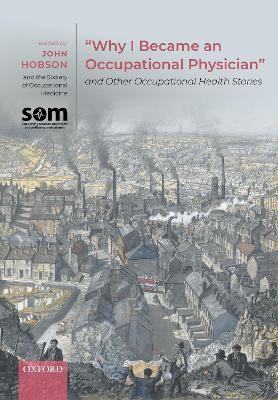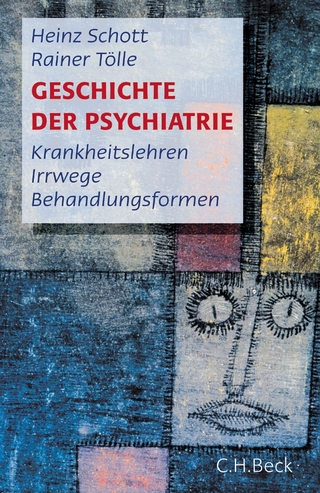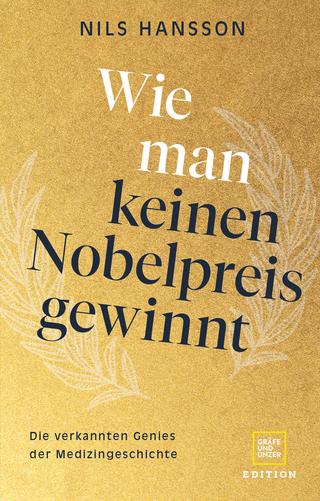
"Why I Became an Occupational Physician" and Other Occupational Health Stories
Oxford University Press (Verlag)
978-0-19-886254-3 (ISBN)
"Why I Became an Occupational Physician" and Other Occupational Health Stories brings together an edited collection of the short articles published in the journal Occupational Medicine between 2002 and 2018. The articles originally appeared as 'fillers', commissioned to literally 'fill' the blank spaces at the end of the main scientific papers, but they soon became a feature in their own right.
Written by doctors working in occupational medicine and health, the fillers began as a series of pieces exploring the varied and often surprising reasons why the individuals chose to pursue this unique speciality, whether it was a natural career move, triggered by a specific event, or stumbled upon by chance. Over time the articles became much broader in their scope and the journal began to attract pieces from some brilliant writers: Mike Gibson, John Challenor, Nerys Williams, and of course the superlative Anthony Seaton, amongst many others.
Each article offers something different: a peek into history, a humorous adventure, a quiet musing, or a thought-provoking observation, but all are tied together under the umbrella of occupational medicine, a speciality that is often little known or understood in the wider world of medicine. This book brings together over 15 years' worth of fascinating and diverse articles into one volume for the first time, giving a rare insight into the world of the occupational physician.
John Hobson is a practising consultant occupational physician. He was the honorary Editor of the journal Occupational Medicine between 2002 and 2018. He holds academic appointments in occupational medicine at Keele, Manchester, and Birmingham Universities.
1: Bill Gunnyeon: Why I became an occupational physician...
2: Jean Spencer Felton: Those extra moments
3: Anon: One hundred years of the health and safety laboratory 1
4: A.C. Mackay: Fifty years ago: Raynaud's phenomenon in a pneumatic tool worker
5: Anthony Seaton: Thoughts on lawnmower blades
6: C.A. Veys: Why I became an occupational physician...
7: Graham Hardy: Thackrah's grave
8: Mike Gibson: The celebration of Saint Monday
9: John Hobson: Sócrates
10: Stewart Lloyd: Why I became an occupational physician...
11: Anon: 'Working Lives' by John Darwell
12: J.J.A. Blakely: Fifty years ago: Harmful noise
13: J.A. Hunter: Tales of Kieran: The occupational physician's odyssey 1: Solvents
14: Katherine M. Venables: Why I became an occupational physician...
15: G.O. Hughes: Fifty years ago: A mobile consulting room (report on a demonstration given at the Annual Provincial Meeting of the Association, Manchester July 1954)
16: John Challenor: Excellent credit rating
17: Anthony Seaton: Two words and a man
18: John Sorrell: Why I became an occupational physician...
19: Anon: The Hawthorne effect
20: Anon: Fifty years ago: Free enterprise and public service
21: John Hobson: Born to run?
22: Peter Verow: Why I became an occupational physician...
23: L.G. Norman: Fifty years ago: Book review: 'The diseases of occupations' by Donald Hunter
24: Mike Gibson: Health and safety legislation
25: Nerys Williams: How one pre-employment decision nearly changed the world order
26: Susan A. Robson: Why I became an occupational physician...
27: Hanaa Sayed: DDA 1995, 2005, or 605?
28: D. Malcolm: Fifty years ago: The work of the Research Advisory Committee
29: Anthony Seaton: I want never gets
30: David Wright: Why I became an occupational physician...
31: Andy Slovak: Why I became a second-hand bookseller: Part 1
32: J. A. Hunter: Tales of Kieran: The occupational physician's odyssey 2: New job
33: John Hobson: The oldest sick note
34: Joseph L. Kearns: Why I became an occupational physician...
35: Andy Slovak: Why I became a second-hand bookseller: part 2
36: W. M. Dixon: Fifty years ago: The first group occupational health service in Scotland
37: Mike Gibson: I learned (a bit) about aviation medicine from that
38: Raymond Agius: Why I became an occupational physician...
39: Naomi Brecker: Occupational health in India
40: John Challenor: A bit like turtles
41: Anthony Seaton: On tenterhooks
42: D. Coggon: Why I became an occupational physician...
43: Naomi Brecker and Barbara Wren: Coming to the end of the road in occupational health: Lessons from cancer care
44: A.W. W. Robinson: Fifty years ago: The medical officer of health and the small workplace
45: John Hobson: The human spirit level
46: R. Ian McCallum: Why I became an occupational physician...
47: David Walker: A close friend
48: J.T. Mets: Occupational hazard of rubber tapping
49: J. A. Hunter: Tales of Kieran: The occupational physician's odyssey 3: The Birdman of Linbridge
50: Mike Gibson: Hunting canaries
51: William Dixon: Why I became an occupational physician...
52: James Preston: Why I now watch my step as an occupational physician
53: R. Viner: Fifty years ago: Occupational health: An employer's view
54: Anthony Seaton: Clinical research
55: David Snashall: Why I became an occupational physician...
56: Ken Addley and Paul McKeagney: The RMS Titanic
57: Kenneth Lee: Fifty years ago: Assessment off the ability to work of the unfit
58: Kirstie Gibson: In search of the black stuff
59: John Hobson: Back to school
60: Anthony Seaton: Billy Liddell
61: Ann Fingret: Why I became an occupational physician...
62: B. H. Pentney: Fifty years ago: General practice and industrial medicine in the United States
63: Nerys Williams: Every cloud has a silver lining... even a failed private practice
64: Ralph Aston: Why I became an occupational physician...
65: Mike Gibson: A memorable patient
66: Anthony Seaton: The strange case of Irving Selikoff
67: Morris Cooke: Why I became an occupational physician...
68: Vanessa Hebditch: Why I am doing the GCC again
69: Anon: Fifty years ago: The appointed factory doctor
70: John Hobson: Mesothelioma
71: Ian S. Symington: Why I became an occupational physician...
72: Mike McKiernan: Sydney 2000
73: J. A. Hunter: Tales of Kieran: The occupational physician's odyssey 4: Vanadium
74: John Challenor: Directly read
75: Peter Harries: Why I became an occupational physician...
76: Richard Colman: A leaky vessel
77: H. Beric Wright: Fifty years ago: Parameters of occupational health in America
78: Anthony Seaton: More genetics for medical students?
79: Monty Brill: Why I became an occupational physician...
80: Arthur Eakins: Charmed to be sure
81: Mike Gibson: A practical demonstration of Boyle's Law
82: John Hobson: Lest we forget
83: Andy Slovak: Why I became an occupational physician...
84: Sabine Wicker and Paul Grime: Are you ready for the EU Sharps Directive 2010/32/EU?
85: Roy Goulding: Fifty years ago: A poisons information service
86: J. A. Hunter: Tales of Kieran: The occupational physician's odyssey 5: Drivers
87: H. Engel: Why I became an occupational physician...
88: John D. Meyer: The ex-servicemen's maternity ward
89: Nerys Williams: Medicine is my lawful wife, and literature is my mistress
90: Anthony Seaton: Those two impostors
91: Athol Hepburn: Why I became an occupational physician...
92: Hans Engel: An elusive occupational toxin
93: Anon: Fifty years ago: The proposed new constitution
94: John Hobson: Armadillo
95: Tim Carter: Why I became an occupational physician...
96: Desmond O'Neill: Learning from the Vikings: Hávamál and occupational rehabilitation
97: Mike Gibson: Early thoughts on g
98: John Challenor: Employers: Aren't they all the same?
99: Roy Archibald: Why I became an occupational physician ...
100: Syed Nasir: The rewards of rural training in the Scottish Highlands
101: Anon: Fifty years ago: Genesis of a new society
102: Anthony Seaton: The mill reek in 1754
103: Alan Bailey: Why I didn't become an occupational physician...
104: Gordon Shepherd: Time to ditch occupational health
105: B.S. Baker: Fifty years ago: A new portable hand operated external cardiac compressor
106: J. A. Hunter: Tales of Kieran: The occupational physician's odyssey 6: Sniffing about
107: Anon: One hundred years of the health and safety laboratory 2
108: John Hobson: All tied up
109: Simon E. Asogwa: Why I became an occupational physician...
110: Paul Grime: Fashion victims
111: Anon: One hundred years of the health and safety laboratory 3
112: Anon: Fifty years ago: Malaises and discontents
113: Clodagh Cashman: Why I became an occupational physician...
114: D. Linn Holness and Gary Liss: The Ontario workplace health champions program
115: Mike Gibson: Going through the motions
116: Anthony Seaton: How to learn science
117: Timothy P. Finnegan: Why I became an occupational physician...
118: Emma Hirons: Hammerfest: Occupational medicine at 70° north
119: R.W. Howell: Fifty years ago: Height, weight, and obesity in an industrial population
120: John Hobson: The raincoat sign
121: W. Glass: Why I became an occupational physician...
122: Karen Coomer: The art of observation
123: Kirstie Gibson: Worst job ads from history: Situation vacant plague doctor
124: David Walker: The adjudicator
125: Anthony Seaton: Stones
126: Peter Verow: Why I became a part-time occupational physician
127: Dorothy Linn Holness: A multidisciplinary clinic for occupational disease
128: Anon: Fifty years ago: The teaching of occupational medicine to undergraduate medical students
129: William R. Jenkinson: Why I became an occupational physician...
130: John Storrs: Jaw ache: An occupational hazard?
131: Nerys Williams: What clinicians should look for in health and lifestyle apps
132: John Hobson: Mellifluous
133: Ira Madan: Why I became an occupational physician...
134: Anon: One hundred years of the health and safety laboratory 4
135: Dianne Baxendine: Slum clinics
136: John Rich: Fifty years ago: Laser hazards
137: Anthony Seaton: A sovereign remedy to all diseases
138: Henry N. Goodall: Why I became an occupational physician...
139: Paul Grime: Fashion victims campaign: Responses from clothing retailers
140: Mike Gibson: What's in a name?
141: J.A. Hunter: Tales of Kieran: The occupational physician's odyssey 7: Aromatherapy
142: David Fishwick: Why I became a respiratory physician with an occupational interest
143: Paul Williams: An unusual occupation with novel hazards
144: A. O. Bech, M. D. Kipling, and W. E. Zundel: Fifty years ago: Emery pneumoconiosis
145: John Hobson: Piles
146: Giuliano Franco: Why I became an occupational physician...
147: Eva Baranyiová: Philosophical transactions: 350 years of publishing at the Royal Society
148: Mike Gibson: Occupational histories
149: Anthony Seaton: Risk assessments: good and bad
150: John Aldridge: Why I became an occupational physician...
151: Eric Altschuler: PTSD induced by the trauma of subordinates: The Robert Gates syndrome
152: F. H. Tyrer: Fifty years ago: Problems of a group occupational health service in Lancashire
153: John Challenor: Working in the shadow of a thin blue broken line
154: Jerry Beach: Why I became an occupational physician...
155: Tomoyuki Kawada: New stress check programme in Japan's workplace
156: Anthony Seaton: Jelly beans and jumbo jets
157: Nerys Williams: Society of Occupational Medicine golden jubilee travelling fellowship 2017
158: John Hobson: Shaking all over
159: Robert Willcox: Why I became an occupational physician...
160: Stephen Deacon: Preparing for retirement
161: Anthony Ryle: Fifty years ago: The scope of occupational medicine in a university health service
162: Anthony Seaton: A blue patient and exploding factories
163: Malcolm Gatley: Why I became an occupational physician...
164: Folashade Adenekan: Golden jubilee travel fellowship 2016
165: Mike Gibson: Which way is up?
166: J.A. Hunter: Tales of Kieran: The occupational physician's odyssey 8: The HAVS and the Have Nots
167: David Walker: Don Valley festival champions
168: Ian Reid-Entwistle: Why I became an occupational physician...
169: Timothy Finnegan: Pegasus at Wanlockhead
170: Anon: One hundred years of the health and safety laboratory 5
171: Joan M. Davies: Fifty years ago: Searching for occupational cancer risks
172: John Hobson: Ready, fire, aim!
173: Chris Sharp: Why I became an occupational physician
174: Frank Klont: Demoralization and stress we can all help?
175: Kirstie Gibson: Keeping hat-making alive in Luton
176: Anthony Seaton: The silent killer
177: Joshua Devonport: Why I might become an occupational physician
178: Timo Hannu: Occupational eye hazard of renaissance sculptor Benvenuto Cellini and the recurrent theme of pigeon's blood
179: G.L. Leathart: Fifty years ago: Pulmonary function tests in asbestos workers
180: Mike Gibson: It's not all hot air
181: Douglas Scarisbrick: Why I became an occupational physician...
182: Arun Chind: Visit the workplace? What's wrong with it?
183: Nerys Williams: Why doctors need to be careful with social media
184: Anon: One hundred years of the health and safety laboratory 6
185: John Hobson: I never knew
186: Arun Peter Chind: Why I became an occupational physician...
187: Eric Teasdale: The early working life of one occupational physician in the 1970s
188: Elizabeth Mitchell: Fifty years ago: The shopworker
189: Anthony Seaton: Neurological memories
190: Karen Coomer: Consequences of OH alert syndrome
191: P.J. Taylor: Fifty years ago: Sickness absence resistance
192: Mike Gibson: More hot air
193: Nerys Williams: Internet addiction: Caught in the web
194: John Challenor: Hazard, risk, and a bullet
195: Mike Gibson: Anti-smoking legislation
196: John Garnett: Fifty years ago: Productivity, morale, and occupational medicine
197: John Hobson: Corbett McDonald
198: Anthony Seaton: Shale is here again
| Erscheinungsdatum | 21.09.2020 |
|---|---|
| Verlagsort | Oxford |
| Sprache | englisch |
| Maße | 170 x 245 mm |
| Gewicht | 502 g |
| Themenwelt | Medizin / Pharmazie ► Medizinische Fachgebiete ► Arbeits- / Sozial- / Umweltmedizin |
| Studium ► Querschnittsbereiche ► Geschichte / Ethik der Medizin | |
| Studium ► Querschnittsbereiche ► Klinische Umweltmedizin | |
| ISBN-10 | 0-19-886254-7 / 0198862547 |
| ISBN-13 | 978-0-19-886254-3 / 9780198862543 |
| Zustand | Neuware |
| Haben Sie eine Frage zum Produkt? |
aus dem Bereich


